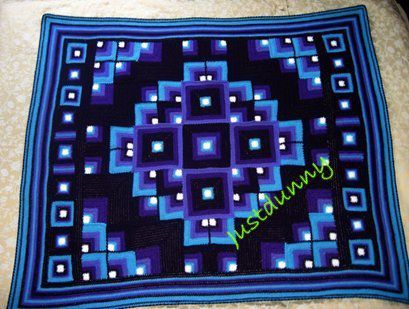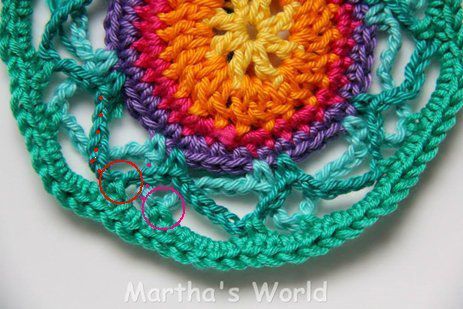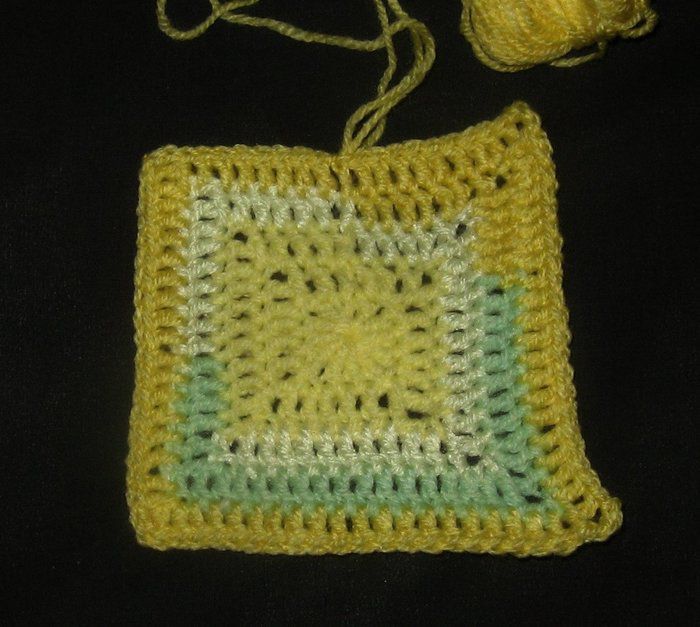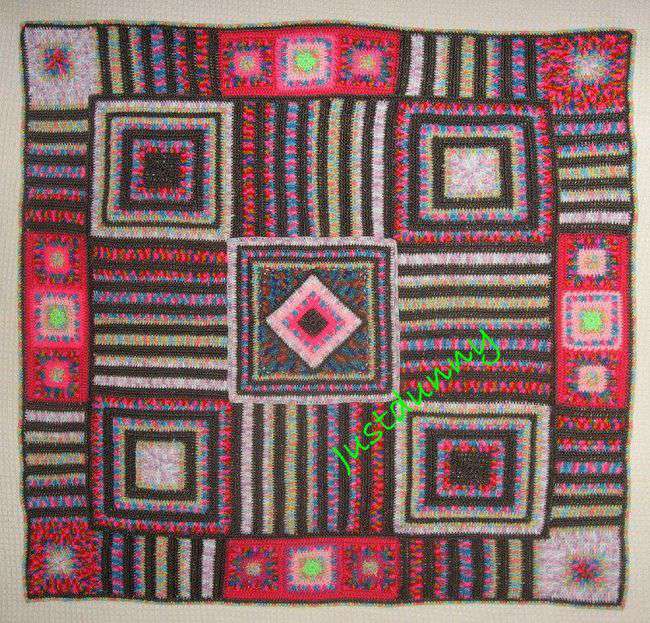Granny asymmetrical on point blanket recipe

All rights reserved on text and photos.
After reading Raffamusa’s blog entry for the arrow point granny square, I had a picture in my mind for a blanket.
This is a rough guide USING UK TERMS to making it.
Work a standard granny square for 14 rows. Over one side of the square, work a corner by making a decrease at each end of 13 rows until one shell of 3 sts remains. Turn, 3 ch, sl st to the ch sp at the other side to make a ch sp to work corner stitches into. I’ve placed this at the top left corner.
Decrease at the beginning of the row by working one turning st/turning ch only in the ch sp. I make a turning stitch by picking up a loop in the ch sp, yo, draw thru the 2 loops, 1 ch.plac
Decrease at the end of each row by working one stitch only into the last ch sp and turning for the next row.
Work over the other three sides, decreasing at the beginning and end for 28 rows.
To...



















